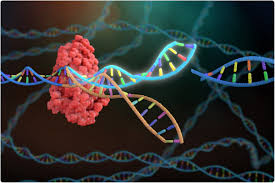General Health Tips & News
CRISPR System for COVID-19 Diagnosis
By A.S. (staff writer) , published on May 13, 2022

Medicine Telehealth Health COVID-19 Diagnosis CRISPR/Cas 13
COVID-19 first emerged in December 2019 and rapidly spread to all parts of the world, causing a global pandemic. The high number of cases of the virus in all countries of the world and its associated mortality has become a source of great concern and leading to a number of studies being conducted to evaluate what will help control the spread.
Early detection of the virus is the key to allowing an early treatment plan and preventing the spread of the virus to those around the affected individual. Even though the PCR test is the current standard diagnostic test for the COVID-19 virus all over the world, it has its limitation and is therefore needed for a diagnostic system that is much more efficient in the detection of the virus, in turn helps control the morbidity and mortality associated with it.
What is the CRISPR System?
The CRISPR allows alteration of gene function by enabling the researchers to make changes in specific genomic sequences in the DNA. This system is essential as a pair of molecular scissors that allows the cutting of DNA strands to get the desired results.
This system can be divided into two classes, known as class 1 and class 2.
COVID-19 Diagnosis with CRISPR/CAS 12
DETECTOR, which stands for SARS-CoV-2 DNA Endonuclease targeted CRISPR trans reporter, is a type of CRISPR/Cas 12 system developed for the diagnosis of the virus. This fairly simple technique allows rapid diagnosis of the virus in an individual due to its ability to efficiently recognize the SRS-CoV-2 RNA extracts. Studies have shown this diagnostic method to detect the virus from a patient’s respiratory tract within a period of only 40 minutes.
This diagnostic method allows isothermal amplification and reverses transcription by a process known as loop-mediated replication. This facilitates the production of purified RNA taken from either nasopharyngeal or oropharyngeal swab, which in turn provides numerous advantages, including faster delivery of test results, target specificity of single nucleotides, allowing using friendly reporting formats, and no requirement of complicated laboratory systems and setups.
COVID-19 Diagnosis with CRISPR/CAS 13
The CRISPR/CAS-13 also allows efficient diagnosis of the COVID-19 virus by evaluating the base pairing between crRNA molecule and target sequence. This doesn’t allow it to be very accurate but also be used as programmable diagnostic equipment.
Benefits of the CRISPR System for COVID-19 Detection
There are numerous benefits of the CRISPR System for the diagnosis of the COVID-19 virus over the conventional methods, which include the antibody and PCR test. The CRISPR diagnostic system doesn’t require thermos-cycling due to the use of isothermal amplification as part of the system. This also allows it to deliver the results much faster than diagnostic tests and allows the individual to start their treatment much sooner, which increases the prognosis of the infection. Moreover, this technique does not require the use of any specialized laboratory tools and equipment and uses accessible reporting techniques, which makes it much more convenient for usage.
However, one of the most significant advantages of this system is its ability to recognize infectious diseases which may be caused by newly emerging variants of a virus, like Corona Virus which is causing a global pandemic due to its different forms. This system accurately detects any mutant forms of a virus, which allows early measures to be taken against its spread.
One challenge that is faced by the viral diagnostic system is the changes in the viral load at different stages of the disease and its ability to impact the test results. For example, when the infection is at a particular stage when the viral loads are exceptionally low, the conventional methods may not be able to detect it.
This system is able to efficiently diagnose the presence of the virus at any viral load and stage of the infection as it primarily relies on the detection of the genome of the virus in the system.
References
Estola, T. Coronaviruses, a new group of animal RNA viruses. Avian Dis. 1970, 14, 330– 336, DOI: 10.2307/1588476
[Crossref], [PubMed], [CAS], Google Scholar
Kahn, J. S.; McIntosh, K. History and recent advances in coronavirus discovery. Pediatric infectious disease journal 2005, 24 (11), S223– S227, DOI: 10.1097/01.inf.0000188166.17324.60
[Crossref], [PubMed], Google Scholar
Mahase, E. Covid-19: First coronavirus was described in The BMJ in 1965. British Medical Journal Publishing Group, 2020.
Fehr, A. R.; Perlman, S. Coronaviruses: an overview of their replication and pathogenesis. In Coronaviruses; Springer, 2015; pp 1– 23
Find articles related to: Medicine Telehealth Health COVID-19 Diagnosis CRISPR/Cas 13
More articles about General Health Tips & News
Back to the Health Tips Index




